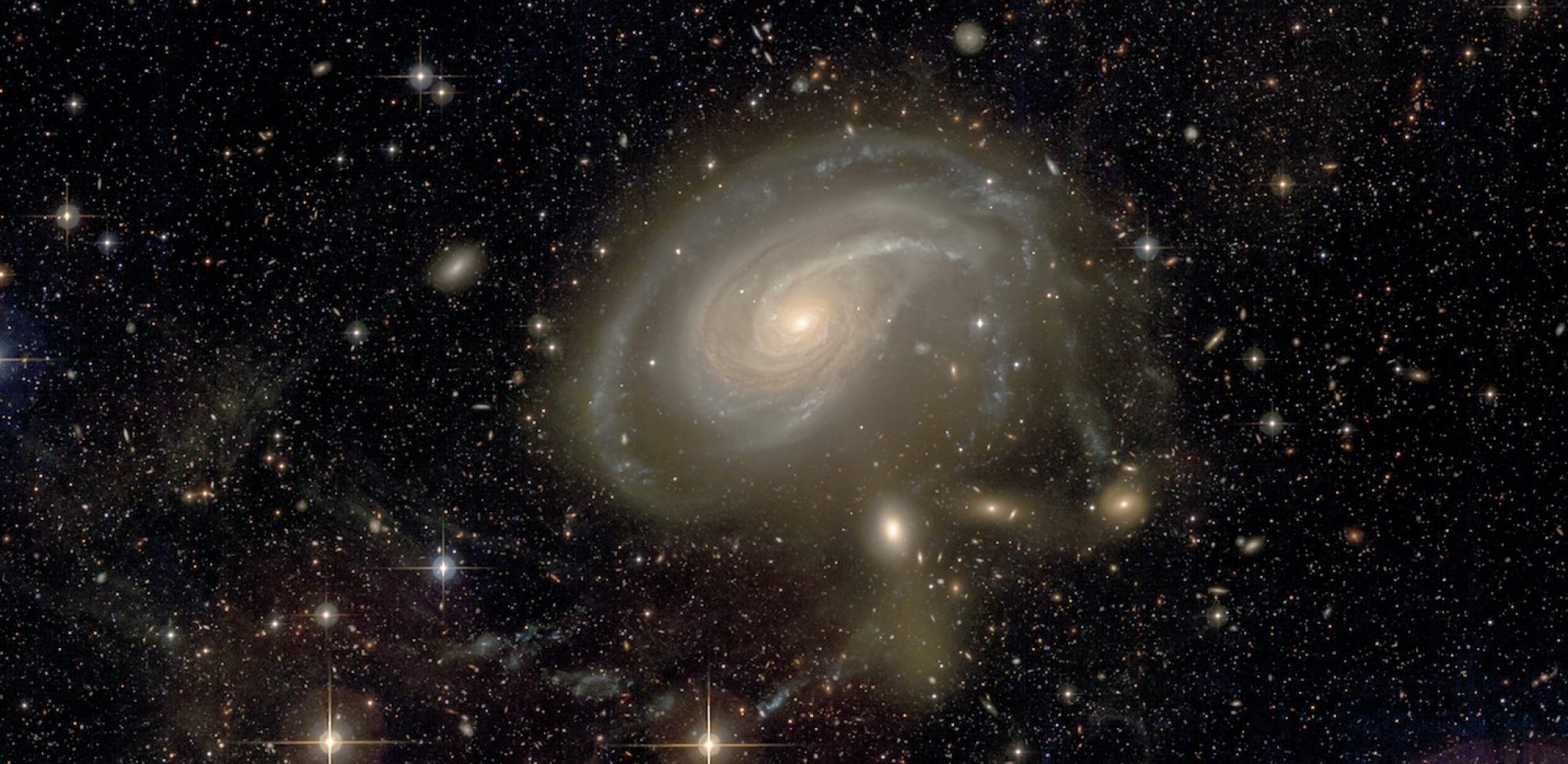A too-many dwarf satellite galaxies problem in the MATLAS low-to-moderate density fields

Scaling relations for MATLAS dwarfs and luminous subhaloes in the TNG50 simulation (Kanehisa+24)
Context. Dwarf galaxy abundances can serve as discernment tests for models of structure formation. Previous small-scale tensions between observations and dark matter-only cosmological simulations may have been resolved with the inclusion of baryonic processes; however, these successes have been largely concentrated on the Local Group dwarfs the feedback models were initially calibrated on.
Aims: We investigate whether the ΛCDM model can reliably reproduce dwarf abundances in the MATLAS low-to-moderate density fields that are centred upon early-type host galaxies beyond the Local Volume.
Protected: Observational evidence of nuclear star cluster formation from globular clusters in dwarf galaxies
The Size and Structure of Globular Cluster Systems and Their Connection to Dark Matter Halos

We study the size and structure of globular cluster (GC) systems of 118 early-type galaxies from the NGVS, MATLAS, and ACSVCS surveys. Fitting Sérsic profiles, we investigate the relationship between effective radii of GC systems (R e,gc) and galaxy properties.
Continue reading “The Size and Structure of Globular Cluster Systems and Their Connection to Dark Matter Halos”Constraining the stellar populations of ultra-diffuse galaxies in the MATLAS survey using spectral energy distribution fitting

We use spectral energy distribution fitting to place constraints on the stellar populations of 59 ultra-diffuse galaxies (UDGs) in the low-to-moderate density fields of the MATLAS survey. We use the routine PROSPECTOR, coupled with archival data in the optical from the Dark Energy Camera Legacy Survey, and near- and mid-infrared imaging from the Wide-field Infrared Survey Explorer, to recover the stellar masses, ages, metallicities, and star formation time-scales of the UDGs. We find that a subsample of the UDGs lies within the scatter of the mass-metallicity relation (MZR) for local classical dwarfs. However, another subsample is more metal-poor, being consistent with the evolving MZR at high redshift.
Continue reading “Constraining the stellar populations of ultra-diffuse galaxies in the MATLAS survey using spectral energy distribution fitting”Strategies for optimal sky subtraction in the low surface brightness regime (associated paper)

The low surface brightness (LSB) regime (μg ≳ 26 mag arcsec-2) comprises a vast, mostly unexplored discovery space, from dwarf galaxies to the diffuse interstellar medium. Accessing this regime requires precisely removing instrumental signatures and light contamination, including, most critically, night sky emission. This is not trivial, as faint astrophysical and instrumental contamination can bias sky models at the precision needed to characterize LSB structures. Using idealized synthetic images, we assess how this bias impacts two common LSB-oriented sky-estimation algorithms: (1) masking and parametric modelling, and (2) stacking and smoothing dithered exposures.
Continue reading “Strategies for optimal sky subtraction in the low surface brightness regime (associated paper)”The creation of a massive UCD by tidal threshing from NGC 936

We study a compact nucleus embedded in an early-type dwarf galaxy, MATLAS-167, which is in the process of disruption by the tidal force of the neighbouring giant S0 galaxy, NGC 936, in a group environment. Using the imaging data of the MATLAS survey, we analyse the stellar tidal tail of MATLAS-167 and its central compact nucleus, designated as NGC 936_UCD. We find that NGC 936_UCD has a luminosity of Mg = -11.43 ± 0.01 mag and a size of 66.5 ± 17 pc, sharing the global properties of ultra-compact dwarf galaxies (UCDs) but significantly larger and brighter compared to the typical UCD populations observed in the Virgo cluster.
Continue reading “The creation of a massive UCD by tidal threshing from NGC 936”Radial velocities and stellar population properties of 56 MATLAS dwarf galaxies observed with MUSE

Universal stellar mass- metallicity relation
Dwarf galaxies have been extensively studied in the Local Group, in nearby groups, and selected clusters, giving us a robust picture of their global stellar and dynamical properties in particular locations in the Universe. Intense study of these properties has revealed correlations between them, including the well known universal stellar mass-metallicity relation. However, since dwarfs play a role in a vast range of different environments, much can be learned about galaxy formation and evolution through extending the study of these objects to various locations. We present MUSE spectroscopy of a sample of 56 dwarf galaxies as a follow-up to the MATLAS survey in low-to-moderate density environments beyond the Local Volume.
Continue reading “Radial velocities and stellar population properties of 56 MATLAS dwarf galaxies observed with MUSE”Protected: Newsletter: 06/01/2023
From starburst to quenching: merger-driven evolution of the star formation regimes in a shell galaxy (associated paper)

Shell galaxies make a class of tidally distorted galaxies, characterised by wide concentric arc(s), extending out to large galactocentric distances with sharp outer edges. Recent observations of young massive star clusters in the prominent outer shell of NGC 474 suggest that such systems host extreme conditions of star formation. In this paper, we present a hydrodynamic simulation of a galaxy merger and its transformation into a shell galaxy.
Continue reading “From starburst to quenching: merger-driven evolution of the star formation regimes in a shell galaxy (associated paper)”
